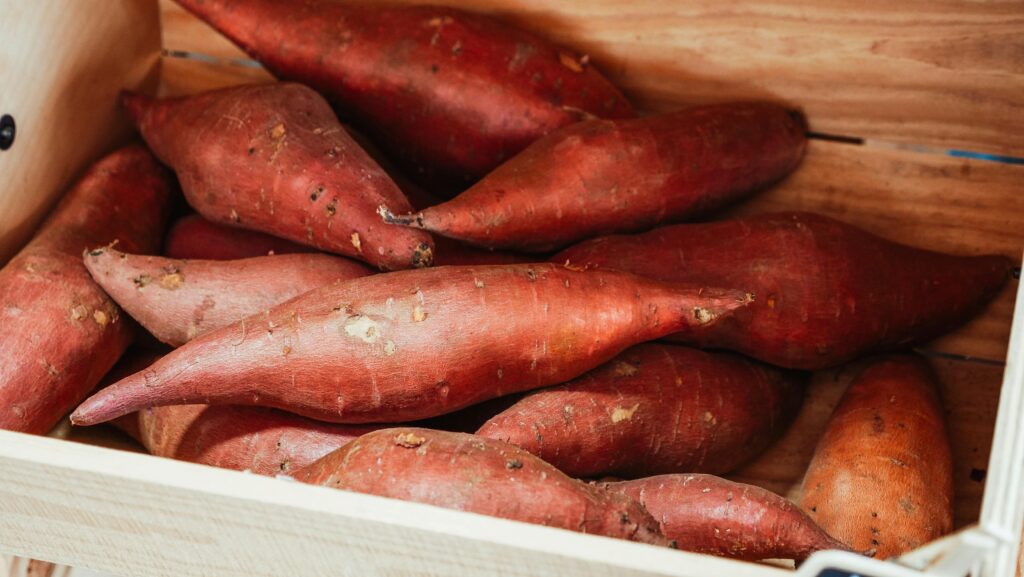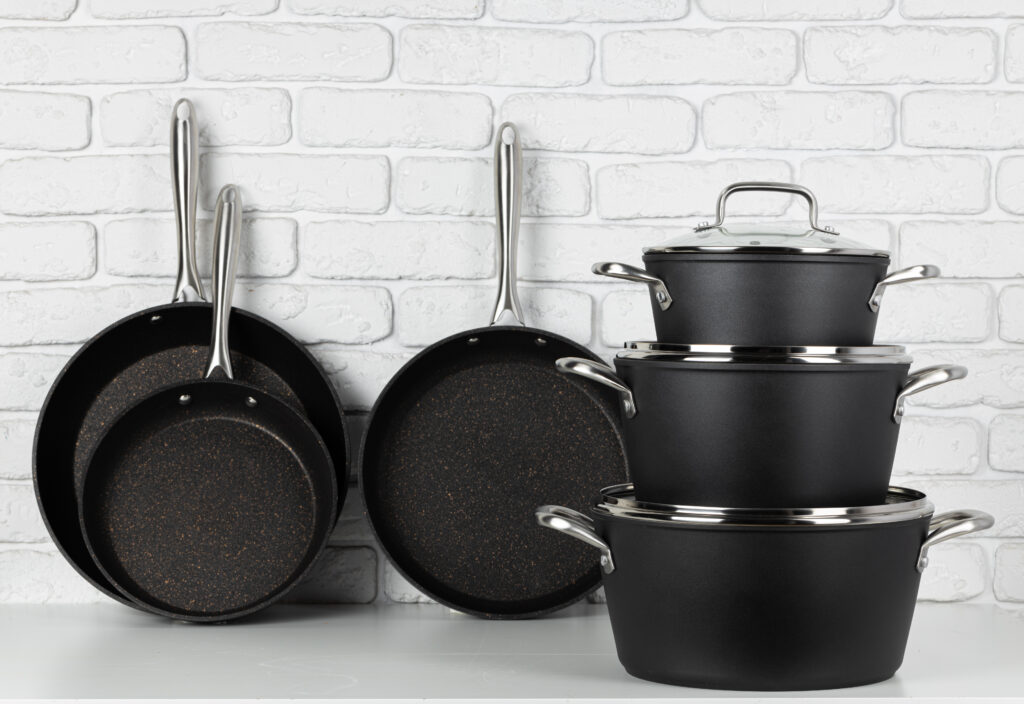Sweet potatoes are a healthier and more nutritious alternative to traditional white potatoes. They are ideal for individuals following a low GI (low glycemic index) diet because they are diverse and abundant in fiber, minerals, and vitamins.
However, like all fresh fruits and vegetables, they have a shelf life and will spoil if not stored properly.
This article will tell you everything you need to know about sweet potatoes going bad.
How Can You Tell if a Sweet Potato is Bad?
Sweet potatoes are a type of tuber commonly used in cooking and baking. They, like all fresh foods, can spoil if not stored properly.
Sweet potatoes are high in antioxidants, which assist in protecting the body from free radicals.
They also contain fewer calories, making them a healthy option. This tuber may be used in a variety of recipes, so you may end up buying more than you need for a few dinners.
Sweet potatoes are a versatile root vegetable that can be cooked, boiled or microwaved. You may be wondering how to determine whether a sweet potato is bad.
If a sweet potato looks or smells terrible, you should avoid eating it. Sweet potatoes are a fall root vegetable with a sweet and earthy flavor.
They taste great grilled or as a side dish. We are not fans of wasting food, which is why we find it quite annoying when we have to discard anything edible yet unnecessary.
What Makes Sweet Potatoes Healthy?
Before we go into the root vegetable life, let’s clarify what makes it so beneficial, as educated scientists claim that sweet potatoes are significantly healthier than conventional potatoes.
Sweet potatoes provide fiber and antioxidants that improve digestive health, protect against cancer, and give vitamins A, C, and B6.
Sweet potatoes are also high in energy, which benefits the brain and immune system. Both sweet potatoes and white potatoes have comparable quantities of protein, potassium and vitamin B6. Both appear on the FDA’s Top 20 Raw Vegetables list; therefore, this food fight is a tie.
Sweet potato fries include more calories and carbohydrates than French fries, but also more vitamin A.
How Can You Tell if a Sweet Potato is Bad?
Sweet potatoes have numerous crucial symptoms as they mature, indicating that they are about to go bad. All of these indications are visible without cutting into the tuber or tasting the sweet potato.
1. Brown spots
Older sweet potatoes will have little brown spots the size of a little finger’s tip. When these spots form, it’s a clear indication that this sweet potato should be eaten as soon as possible.
2. Colour
The color of the sweet potato’s exterior (skin) will begin to alter, which may vary depending on the variety. The more frequent orange-fleshed sweet potato skin will change from grey-brown to darker brown or perhaps black.
However, the purple-skinned sweet potato will mature from red to dark purple. Inside the purple skin, the white flesh will turn yellow and gradually absorb the purple from the outer skin.
Sprouts typically emerge from the potato’s ‘eyes’. If allowed to grow, these sprouts will turn into roots, which, when planted in soil, will eventually produce leaves and more sweet potatoes.
3. Holes
These can be discovered on the skin’s surface as well as within the flesh when sliced. They are typically caused by moisture and temperature variations during growth and are not reason for concern; nonetheless, the tuber will be less thick and flavorless.
4. Mould or Rot
This sign is tough to ignore. It might appear as a grey/white bloom or as grey-green fur; it can be plucked away from the sweet potato flesh before cooking because it has no effect on the flesh.
However, if there are any black rot spots, this is a clear sign that a fungus has infested the sweet potato and should be removed immediately; ingesting this rot can induce stomach troubles and taste nasty.
5. Smell
An aged or rotting sweet potato has a particular aroma; at first, it smells sweet, then sour, and finally stinky.
This fragrance is caused by the breakdown of the sweet potato’s fibers and sugars; this can also create small breaks in the skin and the leakage of a thick syrup-like material.
6. Flesh Texture
This can only be determined by cutting into a sweet potato tuber. A fresh sweet potato will have a thick texture, no discernible fibers, and a bright orange or white color.
A bad sweet potato will be soft, mushy, or stringy, with uneven colors and white fibers visible in the center of the tuber.
Sweet potato tubers with this appearance and texture are no longer edible and should be destroyed right away.
How To Store Sweet Potatoes
There are a few ways to keep sweet potatoes so they don’t bruise or spoil.
Sweet potatoes can last for a long time if stored properly; however, raw sweet potatoes last longer than cooked ones.
-
Do Not Wash Raw Sweet Potatoes
Rinsing raw sweet potatoes is not recommended since it can cause them to decay. If you wash them, they lose shelf life and will only last a week or two. Before storing sweet potatoes, use a dry towel to remove any dirt.
-
Curing Raw Sweet Potatoes
One method for storing raw sweet potatoes is to cure them for 1-2 weeks.
Sweet potatoes must be stored in a warm, humid atmosphere to enhance their flavor and sweetness.
This technique will result in a skin that protects the sweet potato from scratches and bruising. For optimal results, maintain the sweet potatoes in a room with an average temperature of 80–85 degrees Fahrenheit and 90% humidity.
The more carefully you follow these instructions while curing sweet potatoes, the faster they will cure.
After curing, store your sweet potatoes at temperatures ranging from 55 to 60 degrees Fahrenheit for 6 to 8 weeks.
This is so that the curing process can be completed. Once completed, store your sweet potatoes in a root cellar, basement, closet or any other dark, cool, and dry location.
If you cure your sweet potatoes, they can last for up to a year. Everyone’s curing procedure may differ based on their proximity to the specified circumstances.
If you want to be safe, follow the prescribed conditions and leave your potatoes in them for about a week. If your potatoes begin to discolor, it means they are being stored at lower temperatures than desirable.
-
Store cooked sweet potatoes in a container or bag.
If your sweet potatoes are already cooked, preserving them is rather simple. Place cooked sweet potatoes in a shallow container or food storage zipper-sized gallon bag and refrigerate for a short period of time. Cooked sweet potatoes can be stored in the refrigerator for 3 to 5 days if they are covered. To keep sweet potatoes fresher for a longer period of time, store them in an airtight container.
How Long Do Sweet Potatoes Last?
Sweet potato tubers are best purchased fresh, as close to the growing region as possible. Sweet potato tubers may endure a long time if stored properly. However, these times vary greatly depending on where and how the sweet potatoes are stored.
Sweet potatoes contain a high percentage of water, which speeds up the aging process. An approximate guide to these time restrictions can be determined by whether the sweet potato is raw or cooked, stored at room temperature, in the fridge, or even frozen.
A basic rule of thumb for raw, unprepared, fresh sweet potatoes is that they can be stored in your cupboard for up to 5 weeks.
However, if stored in the refrigerator, they can be preserved for up to three months without problem.
Cooked or sweet potatoes will only last a few hours at room temperature. They are best stored in the refrigerator or freezer. Cooked sweet potatoes can be refrigerated for up to 7 days in an airtight container. Alternatively, they can be frozen in an airtight container for up to six months.
Sweet potatoes can also be canned or bottled and stored for a long period of time. This is a simple procedure for extending the life of your sweet potatoes that can be done at home with no special equipment.
A can or jar of prepared sweet potatoes can be kept on the pantry shelf for up to a year, making them an excellent year-round pantry staple. However, an opened jar or can of prepared sweet potatoes will only be kept for one week and should be refrigerated once opened.
Sweet potatoes prepared as fries, chips, or mash can be frozen for up to 4-6 months. However, once thawed in the fridge, they will only last 2-3 days, so eat them soon!
What to Avoid Once Sweet Potatoes Are Cured
Cold temperatures and light are the two most common culprits to avoid when curing sweet potatoes. Keeping your sweet potatoes in a cool, dark spot will help them retain their color and prevent them from spoiling.
Before storing your sweet potatoes, cover them with a layer of aluminum foil to prevent bruising. Additionally, be cautious while handling sweet potatoes and store them in cool, dry conditions.
Shelf Life of Sweet Potatoes
The amount of time sweet potatoes stay fresh is determined by a number of factors, including how they are stored and whether they have been cooked.
Sweet potatoes can survive for a week to a few months if stored uncooked in moderate temperatures.
Sweet potatoes can be stored in the refrigerator for 3–4 days and frozen for up to a year. However, the quality of mashed potatoes deteriorates when frozen.
Frequently Asked Questions About Knowing If A Sweet Potato Is Bad
Can aged sweet potatoes make you ill?
If you come across decaying sweet potatoes with mold spots, exercise caution because these root veggies may carry hazardous germs that can cause food poisoning. So, if you notice any bad sweet potatoes, throw them away to protect your health.
If you are sensitive to terrible food, even eating a small amount of it may make you feel unwell. However, there is no terrible aftermath possible unless you swallow the entire plate of rotten vegetables.
How do nasty sweet potatoes smell?
If the sweet potato’s skin has become black, yellow, purple, brown, red, or white, it is most certainly rotten. If the sweet potato acquires a terrible decaying odor, it should be destroyed because it may be unsafe to consume.
What does an expired sweet potato look like?
Some common characteristics of rotten sweet potatoes include discoloration, softening, and water leakage. Furthermore, black or dark brown skin indicates that the sweet potato has gone bad.
If a portion of the sweet potato has rotted, the entire tuber should be discarded.
Is sprouting sweet potatoes safe to eat?
Some people call these dots on sweet potato skin “eyes,” and they feel that if they are present, the sweet potato is of inferior quality. However, this is not always true. It does not imply that the vegetable is ruined.
They are quite safe to consume. However, if sweet potatoes have shriveled and softened, it means that the nutrients have been taken by the growing sprout.
Conclusion
Fresh sweet potatoes should be a regular part of our diets because they are an excellent food full of minerals, vitamins, and fiber.
Brown stains, color changes, sprouts and holes, strange odors, mold growth, and a soft or mushy texture are signs that they are rotting. For the longest shelf life, keep them dark, dry and cool.




